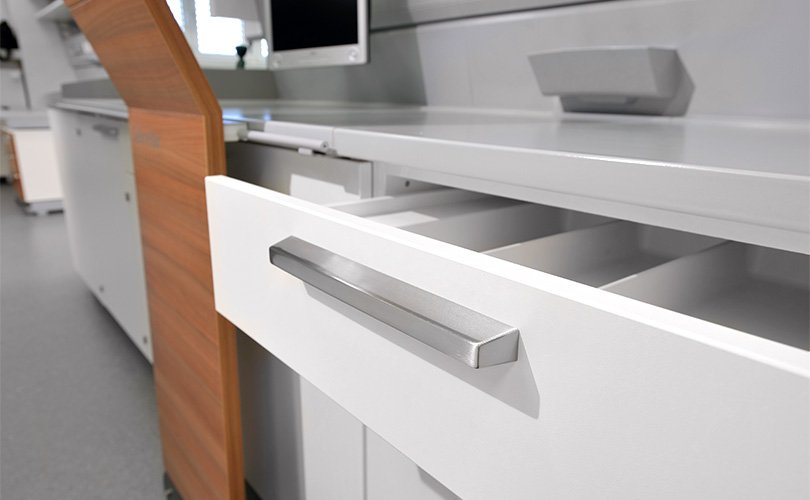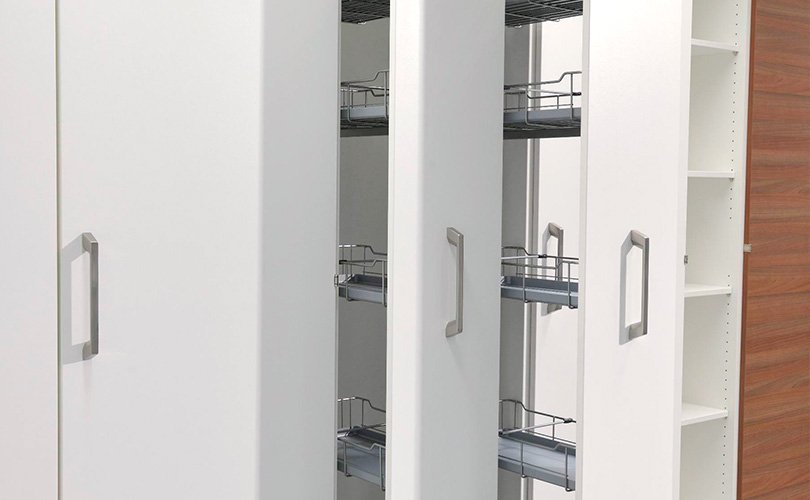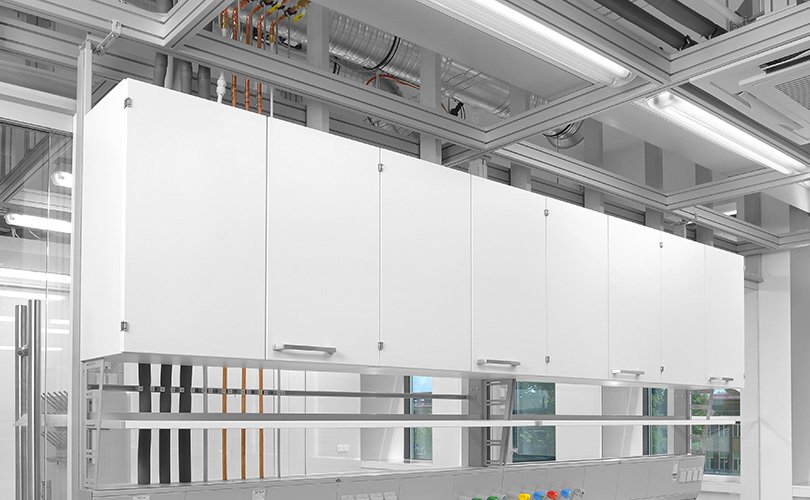Laboratory cabinets – secure storage space in laboratories
You need storage space in laboratories to store equipment, samples and chemicals. Special laboratory cabinets are ideal for this as they are designed to fulfil very specific requirements in laboratories. They enhance safety, ensure the organisation required in everyday laboratory life, and often even have to withstand hazardous materials.
But no two laboratory cabinets are alike! There are many different requirements governing storage space in laboratories. We therefore produce the widest possible range of cabinet solutions to meet customers' specific needs. Whether you need a laboratory underbench cabinet, top-mounted cabinet, mobile storage container or safety cabinet – you are guaranteed to find the perfect model for your laboratory from our extensive product range.
What sets Waldner laboratory cabinets apart?
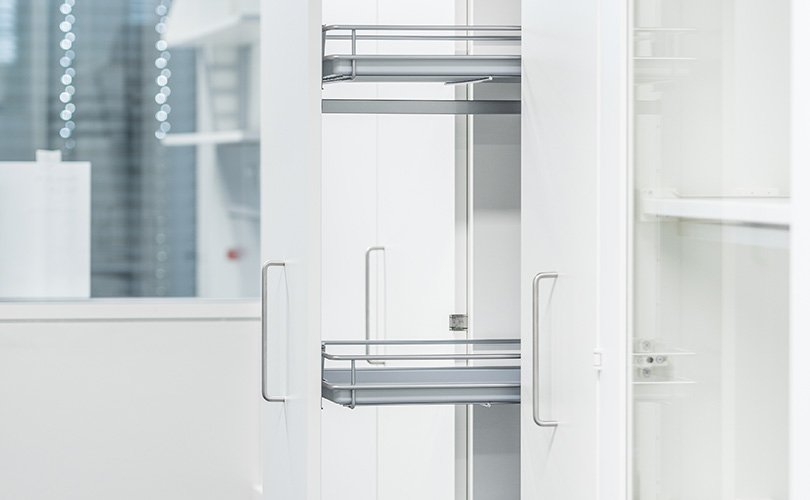
Our SCALA laboratory furniture system delivers includes a wide selection of different types of storage space to guarantee ease of access and safe and secure storage. All laboratory cabinets can be variably equipped and permit optimum use of space in all areas of the laboratory. The cabinets can be extended, retrofitted and are compatible – and so can be adapted to new requirements in the shortest possible time.
For the most common usage requirements, we recommend our melamine resin-coated surfaces. These are easy to care for and durable. In addition, the front edges of the carcass and shelves also feature impact-resistant polypropylene edging.
Wood or steel? Safe in any case!
Waldner also suppliers solid (grade) laminate laboratory cabinets for special requirements. In addition, our storage portfolio includes laboratory cabinets made of powder-coated sheet steel, optionally also in SEFA-certified design.
Waldner special cabinets handle the safe storage of solvents, acids, alkalis and compressed gas bottles, and can also be used for chemical disposal.
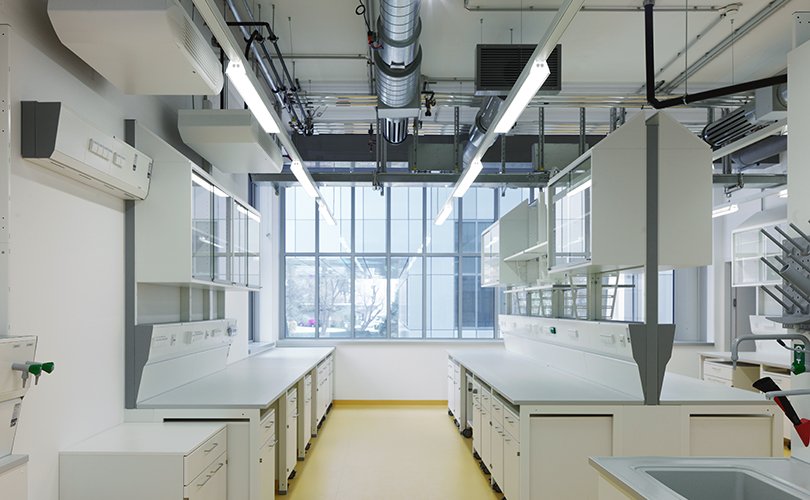
Underbench units: space-saving laboratory cabinets
Underbench units are the answer when you need to maximise the available space in laboratories. They can simply be positioned underneath a laboratory bench. But laboratory underbench cabinets also work well as stand-alone elements.
Waldner's classic laboratory cabinets are its laboratory underbench cabinets on a plinth – a permanent solution for the storage of equipment and chemicals in compliance with DIN EN 16121 and DIN EN 16122. These laboratory cabinets have an underbench depth of 550 or 650 mm.
- Working height: 750 or 900 mm
- Width: 450 to 1200 mm
- Single doors, double doors, drawers, full-height drawers or a combination of these elements
- Four height-adjustable feet
- Fitted as standard: Fully extendible drawer, concealed castor guide and soft stop for the drawers
- Optionally available with extract air connection
- Not suitable for the storage of acids, alkalis, flammable liquids, self-igniting or self-decomposing substances, and compressed gas bottles
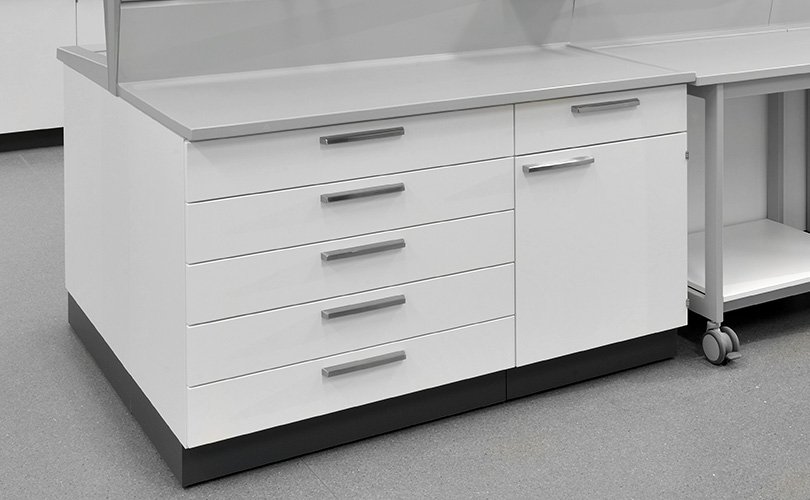
Waldner's stable, topple-proof laboratory underbench cabinet on castors is ideal for the mobile storage of equipment and chemicals in compliance with DIN EN 16121 and DIN EN 16122. It fits perfectly under Waldner laboratory benches and is versatile to use – wherever you need it. It makes our mobile laboratory storage containers into veritable multi-purpose units.
- Working height: 750 or 900 mm
- Width: 450 to 1200 mm
- Single doors, double doors, drawers or a combination of these elements
- Four smooth-running castors, two of which can be locked
- Fitted as standard: Fully extendible drawers and change-pull-out catch, height-adjustable bases and soft stop
- Not suitable for the storage of flammable liquids, compressed gas bottles, self-igniting or self-decomposing substances, acids and alkalis
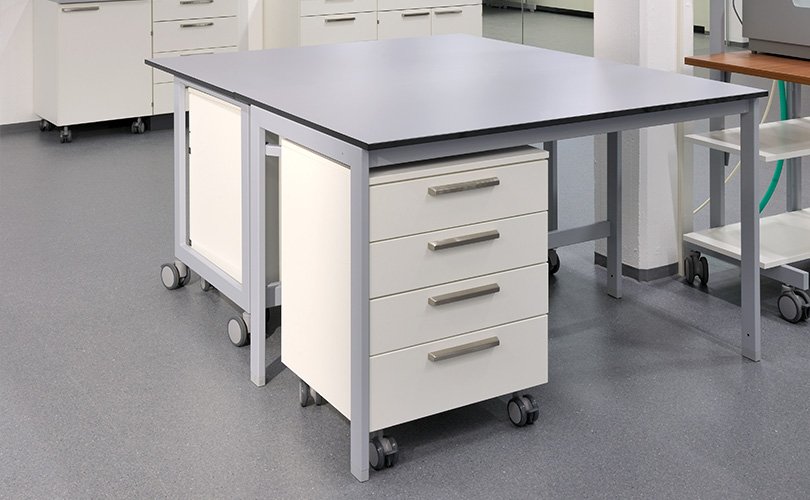
Our portfolio also includes underbench units that can be suspended within the bench frame. These underbench tables can be inserted within the grid with H-frame benches, and positioned as required with C-frame and cantilever frame benches. They offer maximum flexibility for the storage of equipment and chemicals in compliance with DIN EN 16121 and DIN EN 16122.
- Working height: 750 or 900 mm
- Width: 450 to 1200 mm
- Single doors, double doors, drawers or a combination of these elements
- Fitted as standard: Fully extendible drawers, soft stop, height-adjustable bases and fittings to suspend on the profile rail
- Not suitable for the storage of acids, alkalis, flammable liquids, compressed gas bottles, self-igniting or self-decomposing substances
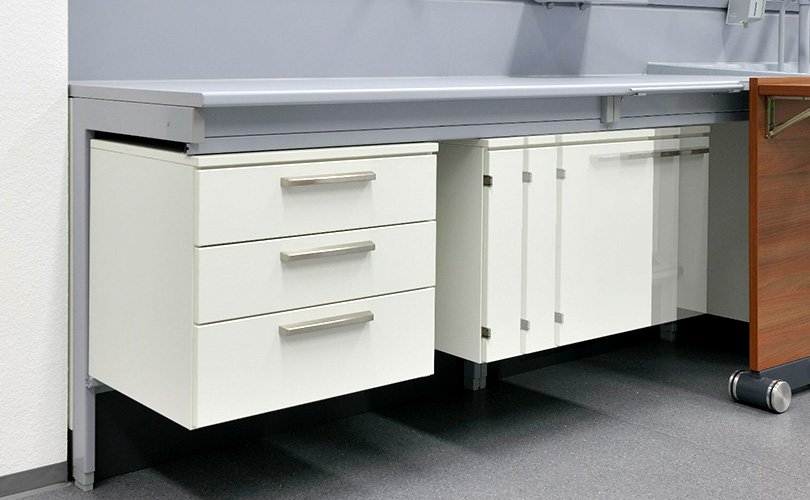
These push-in underbench units are specially designed laboratory cabinets that can be positioned under fume hoods with a steel support frame. They are ideal for the storage of equipment and chemicals in compliance with DIN EN 16121 and DIN EN 16122.
- Height: 640 or 716 mm – depending on the model
- Width: 545 to 1200 mm
- Hinged doors with 270° hinges, drawers, full-height drawers or a combination of these elements
- Compatible with fume hoods with rear wall or side installation on a steel support frame
- Four height-adjustable feet
- Optionally available with extract air connection
- Not approved for the storage of flammable liquids, acids, alkalis, compressed gas bottles and self-igniting or self-decomposing substances
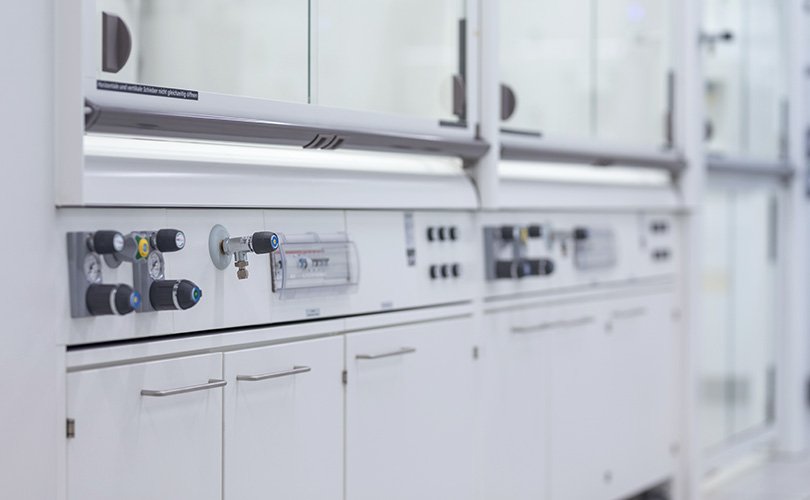
This special underbench cabinet is ideal as an underbench unit for laboratory sinks. Choose from a sink with underbench unit for a service spine or in front or a wall, or a front end sink for double-sided work benches. Both versions are ideal for the storage of equipment and chemicals in compliance with DIN EN 16121 and DIN EN 16122.
- Width: 600 to 1720 mm (depending on the model)
- Height: 870 mm
- Four height-adjustable feet
- Fitted as standard: Waste bins with full-height drawer, swivel door with tilting waste bin and hinged doors
- Not suitable for the storage of acids, alkalis, compressed gas bottles, flammable liquids and self-igniting or self-decomposing substances
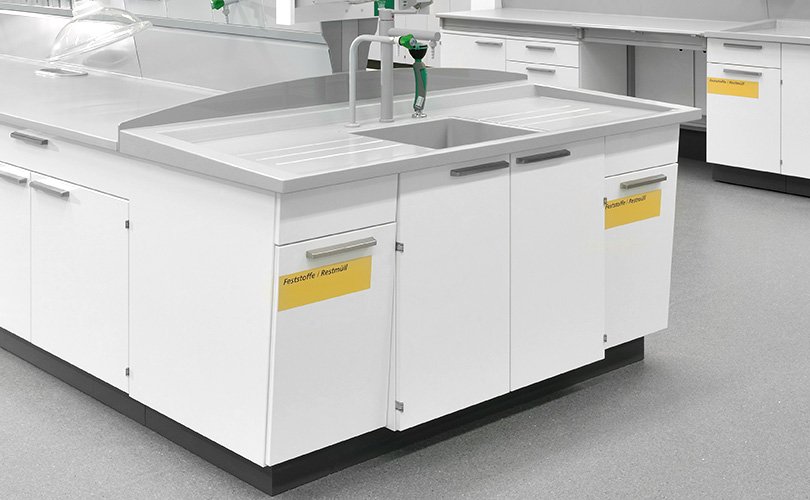
High laboratory cabinets for even more storage space
Laboratory underbench cabinets are not the only units available to provide even more storage space in laboratories. High laboratory cabinets or suspended cabinet elements are ideal for the storage of equipment.
Waldner laboratory suspended cabinets are ideal for making optimum use of the available space in laboratories. They are fastened to the service spine or wall without a visible gap and can be used to store a range of chemicals, equipment and accessories in compliance with DIN EN 16121 and DIN EN 16122.
- Width: 450 to 1200 mm
- Height: 460 or 760 mm
- Optionally available with hinged or sliding glass doors
- Not approved for the storage of flammable liquids, compressed gas bottles, self-igniting or self-decomposing substances, acids and alkalis

Waldner's traditional laboratory cabinets with an overall height of 2090 mm are an excellent option for operators who require a lot of storage space in their laboratory. They offer plenty of space for anything that is regularly needed or that you want to store there (in compliance with EN DIN 16121 and DIN EN 16122). Make the most of diverse options to perfectly adapt this model to your needs.
- Width: 450 to 120 mm
- Depth: 350 or 550 mm
- Hinged doors, folding doors or drawers
- Optional: Extract air connection, extendible shelves (with 550 mm cabinet depth) and fully extendible drawers (with 550 mm cabinet depth)
- Not approved for the storage of acids, alkalis, flammable liquids, compressed gas bottles, self-igniting or self-decomposing substances
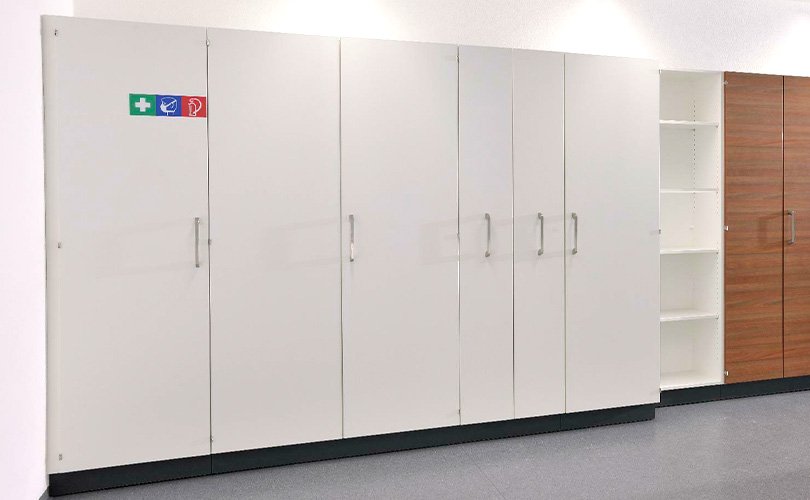
Fitted as permanent cabinets on existing tall cabinets, pull-out cabinets, emergency cabinets or acid and alkali cabinets, Waldner top-mounted cabinets provide additional storage space in laboratories (in compliance with DIN EN 16121 and DIN EN 16122). These laboratory cabinets feature a rail for the secure suspension of ladders so that higher cabinets can be reached safely.
- Width: 450 to 1200 mm
- Height: 610 or 760 mm
- Depth: 350 or 550 mm
- Featuring hinged doors and height-adjustable shelf
- Not approved for the storage of acids, alkalis, flammable liquids, compressed gas bottles, self-igniting or self-decomposing substances
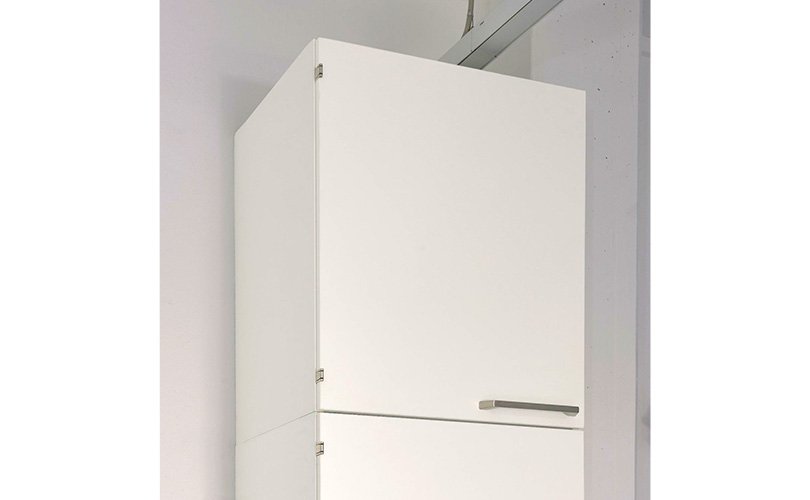
Waldner's pull-out cabinets (also colloquially known as pharmacy cabinets) are ultra-space-saving. You can store liquid and solid substances in pull-out wire baskets with collection trays in compliance with DIN EN 16121 and DIN EN 16122.
- Width: 600 or 900 mm
- Height: 2090 mm
- Depth: 550 mm
- Drawers: height-adjustable, each with five trays, accessible from both sides
- Four height-adjustable feet
- Optionally available with extract air connection
- Not approved for the storage of acids, alkalis, flammable liquids, compressed gas bottles, self-igniting or self-decomposing substances


